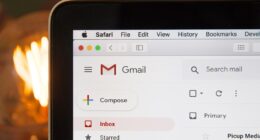The music industry is a multifaceted ecosystem that encompasses various stakeholders, including artists, record labels, producers, promoters, and distributors. Each of these entities plays a crucial role in the creation, promotion, and distribution of music. In recent years, the landscape has evolved dramatically due to technological advancements and shifts in consumer behavior.
The rise of digital streaming platforms like Spotify, Apple Music, and YouTube has transformed how music is consumed, leading to a decline in physical sales and a surge in online streaming. This shift has not only changed revenue models but also how artists connect with their audiences. Moreover, the democratization of music production and distribution through platforms such as Bandcamp and SoundCloud has empowered independent artists to reach global audiences without the need for traditional record labels.
This has led to an explosion of diverse musical genres and styles, as artists from various backgrounds can now share their work with minimal barriers. However, this increased accessibility also means that competition is fiercer than ever. Artists must navigate a crowded marketplace where standing out requires not only talent but also savvy marketing strategies and a deep understanding of their target audience.
Key Takeaways
- The music industry landscape is constantly evolving and requires a deep understanding of current trends and consumer behavior.
- Building a strong brand identity is crucial for standing out in a crowded market and connecting with your target audience.
- Compelling press releases and media kits are essential tools for capturing the attention of journalists and securing media coverage.
- Leveraging social media and digital marketing is key to reaching a wider audience and building a loyal fan base.
- Engaging with influencers and bloggers can help amplify your message and reach new audiences within your niche.
- Securing features and interviews in relevant media outlets can help increase visibility and credibility for your brand.
- Utilizing email marketing and newsletters is an effective way to stay connected with fans and keep them informed about your latest news and releases.
- Measuring and analyzing PR campaign success is important for understanding what strategies are working and where adjustments may be needed.
Building a Strong Brand Identity
In an industry saturated with talent, establishing a strong brand identity is essential for artists looking to differentiate themselves. A brand identity encompasses the visual elements, messaging, and overall persona that an artist projects to the public. This includes everything from the artist’s logo and album artwork to their social media presence and public persona.
A cohesive brand identity helps create recognition and fosters a connection with fans, making it easier for them to engage with the artist’s work. To build a compelling brand identity, artists should start by defining their unique selling proposition (USP). This involves identifying what sets them apart from others in their genre.
For instance, an artist might focus on their lyrical storytelling ability, innovative sound, or cultural background. Once the USP is established, it can be woven into all aspects of the artist’s branding, from promotional materials to live performances. Consistency is key; whether through visuals or messaging, maintaining a unified brand identity helps reinforce the artist’s image and makes it easier for fans to relate to them.
Creating Compelling Press Releases and Media Kits

Press releases and media kits are vital tools for artists seeking to gain media attention and promote their work effectively. A well-crafted press release serves as an announcement that provides journalists with essential information about an artist’s new project, upcoming shows, or significant milestones. It should be concise yet informative, capturing the essence of the news while enticing media outlets to cover it.
Key elements of a successful press release include a catchy headline, a strong lead paragraph that summarizes the news, relevant quotes from the artist or collaborators, and contact information for follow-up inquiries. In addition to press releases, media kits play a crucial role in providing journalists with comprehensive background information about an artist. A media kit typically includes a biography, high-resolution images, links to music samples or videos, and any notable achievements or press coverage.
By presenting this information in an organized manner, artists can make it easier for journalists to write about them. For example, an artist launching a new album might include a press release announcing the release date alongside a media kit that features their previous work and highlights their artistic journey.
Leveraging Social Media and Digital Marketing
| Platform | Metrics |
|---|---|
| Likes, Shares, Comments, Click-through rate | |
| Followers, Engagement rate, Impressions | |
| Retweets, Mentions, Follower growth | |
| Connections, Post views, Clicks | |
| Website | Visitors, Page views, Conversion rate |
Social media has become an indispensable tool for artists looking to connect with fans and promote their music. Platforms like Instagram, Twitter, TikTok, and Facebook allow artists to share updates, engage with followers, and showcase their personalities in real-time. By leveraging these platforms effectively, artists can build a loyal fanbase and create buzz around new releases or events.
For instance, TikTok has emerged as a powerful platform for music discovery; viral challenges or trends can catapult an unknown song into mainstream success overnight. Digital marketing strategies also play a significant role in promoting music. Artists can utilize targeted advertising on social media platforms to reach specific demographics that align with their target audience.
Additionally, creating engaging content such as behind-the-scenes videos, live Q&A sessions, or interactive polls can foster deeper connections with fans. By consistently engaging with their audience through social media and digital marketing efforts, artists can cultivate a community that supports their work and amplifies their reach.
Engaging with Influencers and Bloggers
Influencer marketing has gained traction across various industries, including music. Collaborating with influencers or bloggers who have established followings can significantly enhance an artist’s visibility. These individuals often have dedicated audiences that trust their recommendations, making them valuable allies in promoting new music or upcoming events.
For example, an indie artist might partner with a popular music blogger to feature their latest single on the blog’s platform or collaborate on social media content that showcases the artist’s work. When engaging with influencers or bloggers, it’s essential for artists to choose individuals whose values align with their brand. Authenticity is crucial; fans can often discern when partnerships are purely transactional versus when they stem from genuine admiration for the artist’s work.
By fostering authentic relationships with influencers who genuinely appreciate their music, artists can create more impactful promotional campaigns that resonate with audiences.
Securing Features and Interviews in Relevant Media Outlets

Gaining features and interviews in relevant media outlets is a powerful way for artists to increase their visibility and credibility within the industry. Securing coverage in respected publications or popular podcasts can introduce an artist to new audiences and establish them as credible voices in their genre. To achieve this, artists should research media outlets that align with their musical style and target demographic.
This could include music blogs, magazines, radio stations, or podcasts that focus on similar genres or themes. Once potential outlets are identified, artists can pitch story ideas or interview requests that highlight their unique perspectives or recent projects. A well-crafted pitch should be personalized to each outlet, demonstrating an understanding of their audience and how the artist’s story fits within that context.
For instance, if an artist has released an album addressing social issues, they might pitch themselves as a guest on a podcast that discusses activism in music. By strategically targeting relevant media outlets and crafting compelling pitches, artists can secure valuable features that elevate their profile.
Utilizing Email Marketing and Newsletters
Email marketing remains one of the most effective ways for artists to communicate directly with their fans. Unlike social media platforms where algorithms can limit visibility, email allows artists to reach their audience without intermediaries. By building an email list through sign-ups on their website or during live shows, artists can create a direct line of communication with fans who are genuinely interested in their work.
Newsletters can serve various purposes: announcing new releases, sharing exclusive content such as behind-the-scenes footage or early access to tickets, or providing updates on upcoming shows and tours. The key is to provide value to subscribers while maintaining consistent communication. For example, an artist might send out a monthly newsletter featuring not only updates about their music but also curated playlists or insights into their creative process.
This approach fosters a sense of community among fans and keeps them engaged with the artist’s journey.
Measuring and Analyzing PR Campaign Success
To ensure that public relations efforts yield positive results, artists must measure and analyze the success of their campaigns systematically. This involves setting clear objectives at the outset—whether it’s increasing social media followers, securing media coverage, or driving traffic to streaming platforms—and identifying key performance indicators (KPIs) that align with those goals. For instance, if an artist aims to boost streaming numbers for a new single, they might track metrics such as the number of streams on platforms like Spotify or Apple Music before and after a PR campaign.
Analyzing data from various sources can provide valuable insights into what strategies are working and where adjustments may be needed. Tools like Google Analytics can help track website traffic generated from press releases or social media campaigns, while social media analytics can reveal engagement rates on posts related to specific promotions. By regularly reviewing these metrics and adjusting strategies accordingly, artists can refine their PR efforts over time and maximize their impact within the competitive music industry landscape.









